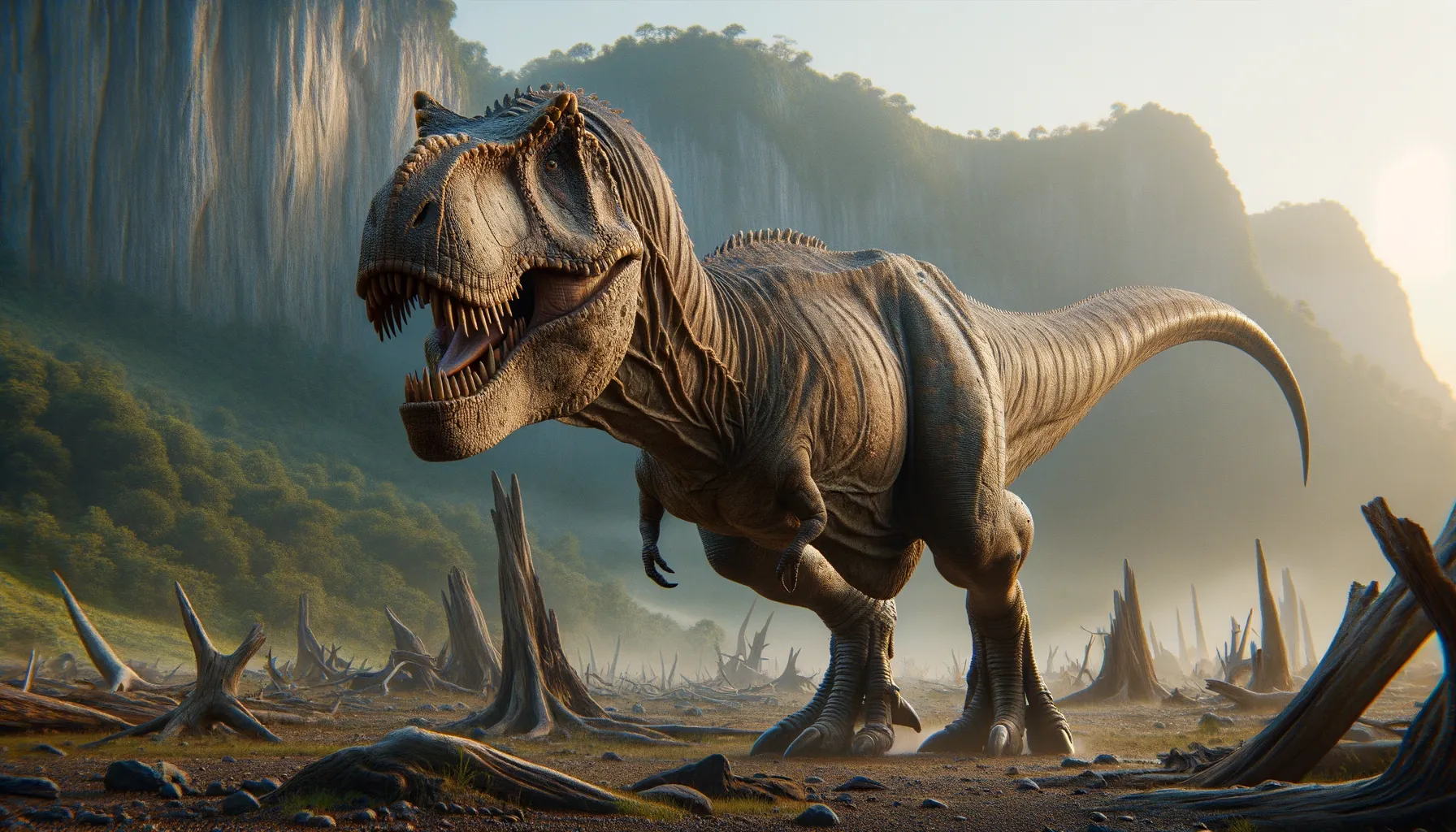
Dynamosaurus
A formidable force of the dinosaur realm.
Period
Cretaceous
Length
Around 40 feet from head to tail.
Height
Could reach up to 12 feet tall.
Weight
Approximately 7 tons.
Dynamosaurus was a large carnivorous dinosaur that roamed the earth during the late Cretaceous period. Closely related to the Tyrannosaurus rex, it was massive in size and prowled regions now known as North America. Its discovery was a gateway to understanding more about the apex predators of its time. The impressive build and fearsome features made it one of the dominant carnivores of its ecosystem.
Diet
Dynamosaurus was carnivorous, feeding mainly on other large dinosaurs. Its powerful jaws enabled it to crush bones easily and consume flesh with efficiency. Fossil evidence suggests it might have also scavenged remains from carcasses.
Hunting
As an apex predator, it likely relied on ambush techniques, using its massive size and strength to overpower prey. Solitary hunting might have been common, although some theories suggest occasional group strategies for larger or more challenging targets.
Environmental challenges
With significant changes in climate, including fluctuations in temperature, Dynamosaurus had to adapt to varying prey availability. Competition with other predators for food resources was another constant hurdle. The asteroid impact at the end of the Cretaceous period brought about substantial environmental changes, contributing to its eventual extinction.
Speed
Moderate, akin to an average predator.
Lifespan
Estimated to live around 25 to 30 years.
First discovery
Found in 1900, originally thought to be a new species.
Fun Facts
- Dynamosaurus was initially thought to be a different species, but it was later discovered to be the same as the famous Tyrannosaurus rex.
- The name 'Dynamosaurus' means 'power lizard,' highlighting the creature's impressive size and strength.
- Only one fossil of Dynamosaurus was discovered, which is now part of the Tyrannosaurus rex's identity.
- The discovery of Dynamosaurus fossil remains was in the early 20th century in Wyoming, USA.
- A portion of the Dynamosaurus fossil is on display at the Natural History Museum in London.
- The confusion between Dynamosaurus and T. rex was due to the slight differences in the fossil fragments found.
Growth and Development
Dynamosaurus likely experienced rapid growth during its juvenile years, reaching maturity within a decade. Fossil evidence points to strong bones and thick musculature developing early on for resilience and strength. As it aged, slower growth signaled the transition to a fully mature predator capable of engaging with other large creatures.
Habitat
Its habitat consisted of floodplains, forests, and coastal regions, providing a rich diversity of prey. Seasonal changes would have affected its movement, likely causing migrations based on climate and food availability. The mixed terrain offered both hunting grounds and places for nesting.
Interaction with other species
Dynamosaurus interacted primarily as a predator, instilling fear in smaller creatures and competing with other large carnivores. It may have occasionally scavenged kills from other predators. Herbivorous species were both its prey and potential indicators of ecosystem health, influencing its survival strategies.
Natural lifespan
Dynamosaurus lived naturally around 25 to 30 years, assuming it survived to maturity.
Reproduction
Reproduction likely involved laying eggs in secure, secluded nests, with some level of parental care to protect the young. The number of eggs per clutch might have varied, potentially providing a buffer against high mortality rates among juveniles.
Social behaviour
Largely solitary, Dynamosaurus may have come together during mating seasons. Some studies suggest occasional social interactions, possibly forming loose groups when hunting exceptionally large prey. However, such behavior remains speculative and would have depended heavily on environmental factors.
Fossil locations
Primarily discovered in North America, the most notable fossils were found in regions like Wyoming and Montana. These finds have been pivotal in understanding the general lifestyle and behavior of large theropods in the late Cretaceous. Fossilized remains include bones, teeth, and partial skeletons, offering insights into its structure and environment.
